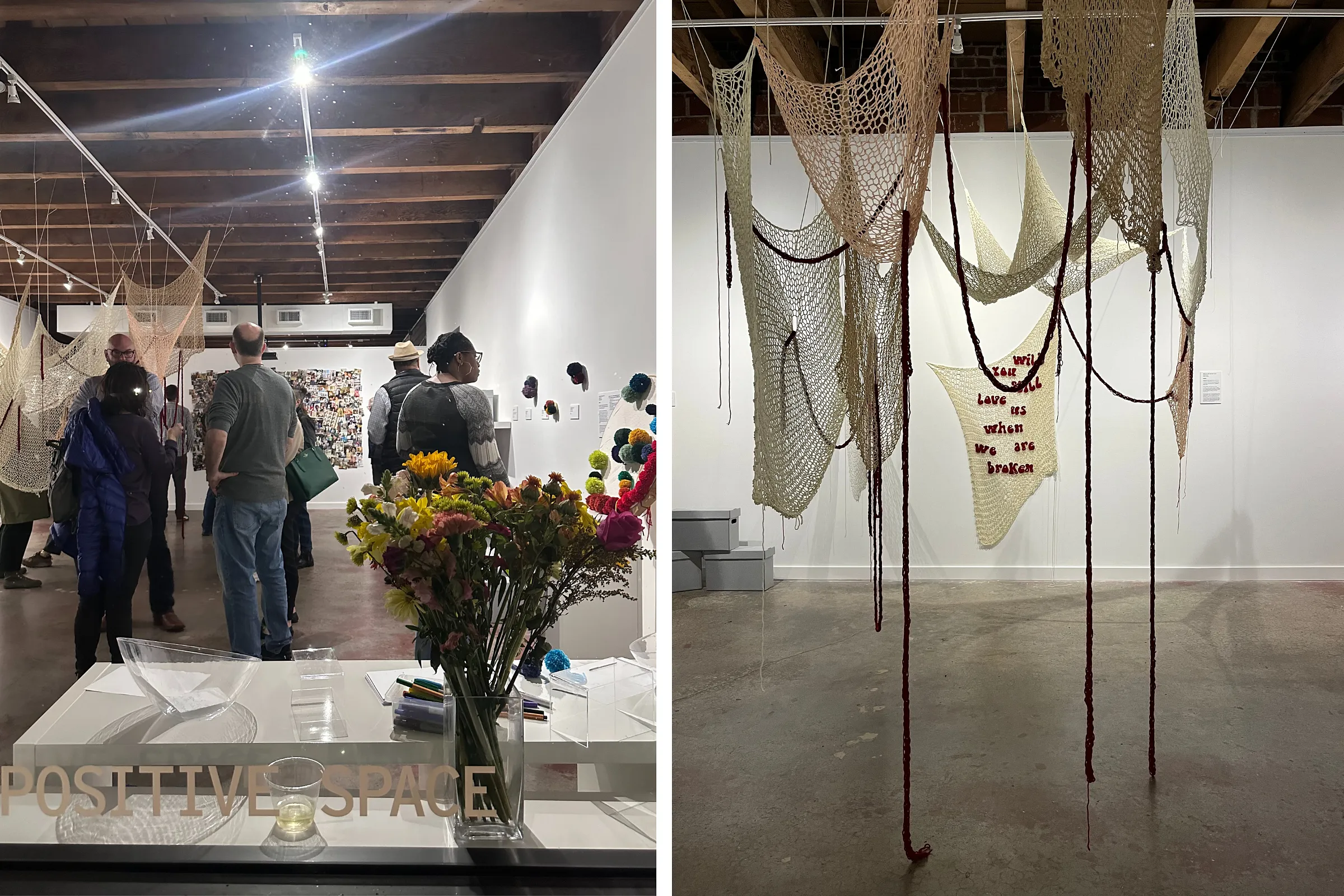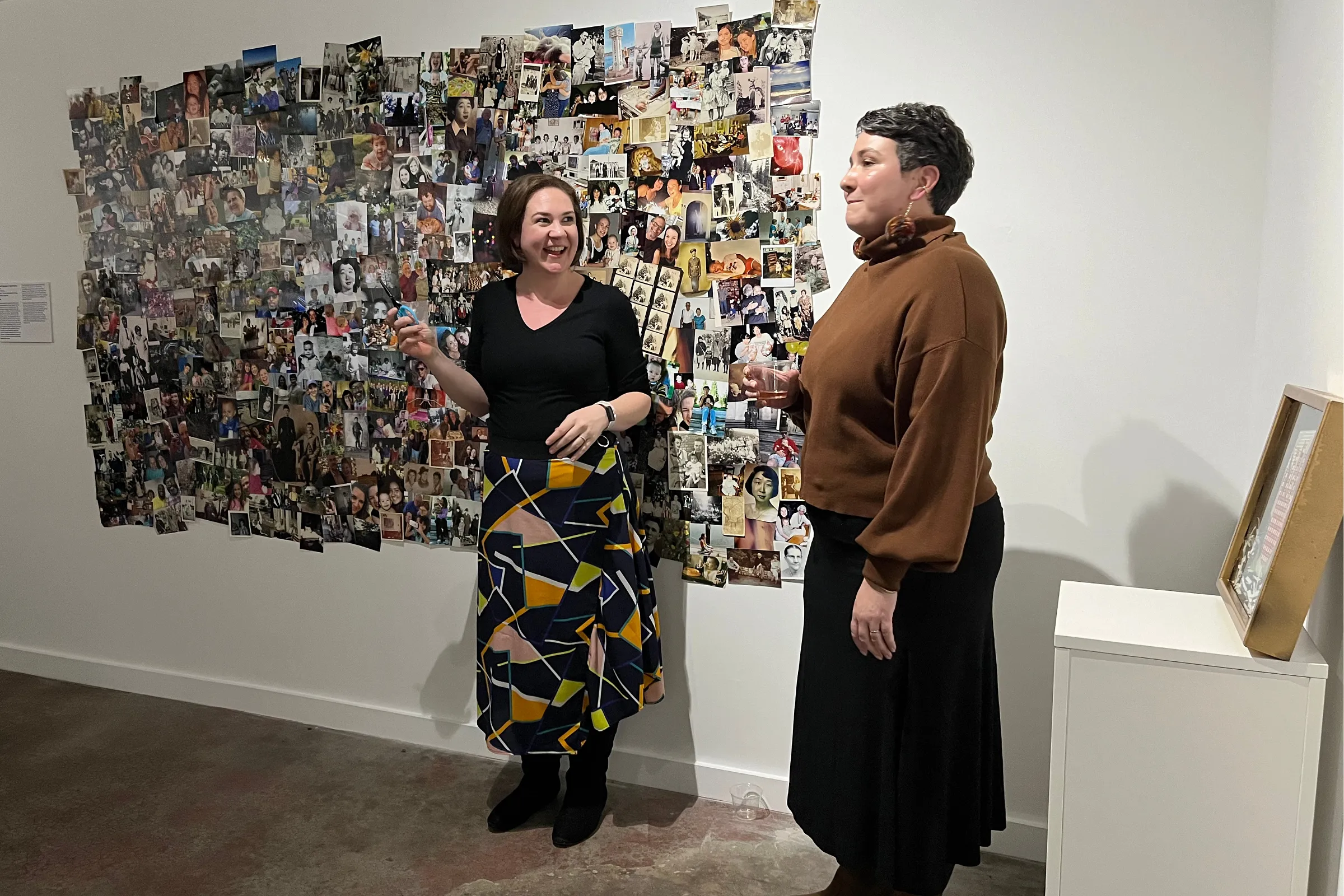What Is Spurious Is Also Precious
Through February 24, 2024
Positive Space Tulsa
Artists often get through the hard part of starting a new work by relying on a preconceived structure, set of rules, or collection of materials. Think of Dogme 95, the group of avant-garde filmmakers whose “Vows of Chastity” dictated that their works be made in strict accordance with a set of parameters, like filming in color without the use of special lighting, or the absence of props. Movements like Dada, though less dogmatic, encouraged the use of everyday and readymade materials to antagonize the constraints of the art world (as in Duchamp’s Fountain). Ultimately, such rules can help an artist create by limiting scope — the starting point becomes less labored when you have structure to lean on.
In What Is Spurious Is Also Precious, the current exhibition at Positive Space Tulsa, that structure involves flipping the usual relationship between artist and curator. In a typical process, an artist creates a work, and then a curator brings that work into an exhibit and writes a description to accompany it. Here, art historian/curator Sara Smallhouse and artist/archivist Malinda Blank (together known as BlankHouse Productions) reversed that process: Smallhouse created labels that described artworks that didn’t yet exist, and Blank then used those labels to make the pieces they described. “We made specific rules for ourselves,” Blank explained in a talk at the show’s opening reception. “I could not change a single word on the label … and in exchange, she [Smallhouse] didn’t get to see anything visual that I created until she showed up [to the exhibition].”
The label for Will You Still Love Us? (2023) reads as follows: “Stepping into this draped textile confronts its materiality. Not performing as a rug, blanket, or garment, the yarn occupies open-air space at eye level…. One is invited to walk inside this organic structure.” Blank envisioned this set of instructions as an open network of netted and draped pieces of yarn, which she stitched together and unified with a crimson rope. The work, hung from above, rests at eye level and invites the viewer into the spatial arrangement, with the words “Will you still love us when we are broken” knitted into a wall hanging on one side.

Other works, such as New Town Clock (2024), provided a prompt not just for Blank but also for a willing viewer to participate in the direct making of the artwork. Reminiscent of instructional performance scores popular among Fluxus artists of the 1960s — like La Monte Young’s Composition 1960 No. 10 (otherwise known as Draw a Straight Line and Follow It or Zen for Head, famously performed by Nam June Paik) — several of the pieces here aren’t actually complete until the viewer completes them. For instance, a set of archival boxes staged in the gallery and available for sale contain a set of unrelated objects (such as a “pad liner [nude] from sports bra,” a “ceramic head created by Caleb Hovland,” and “polyester bell bottoms”) intended to be arranged into a piece created by the collector and brought back for inclusion in the show.
The largest work in the exhibition (and the one that gives its name to the show) is a photo collage seen at the back of the space. It’s a monumental gathering of photographs, a mix of family photos and found images tightly arranged into a large wall piece. The piece recalls the work one engages in when remembering or misremembering family events, members, or stories. In experiencing this work, I found myself looking for relationships, searching for children that have aged, grandparents in their youth, and trying to identify the strangers or outliers among them. Memory is at once automatic and created — and, like this work and others in the exhibition, a piece or performance that we can decide to participate in.

Ultimately, the position Blank and Smallhouse put the viewer in is that of a spurious interloper. Challenging the traditional roles of artist, curator, and viewer, they invite us to touch, make, and become part of their work. What might be considered spurious or inauthentic art-making because of its co-authored nature is instead seen as precious, valuable, welcomed.
Next at Positive Space Tulsa: Untouched//Unplowed by Rachel Rector, opening March 7






